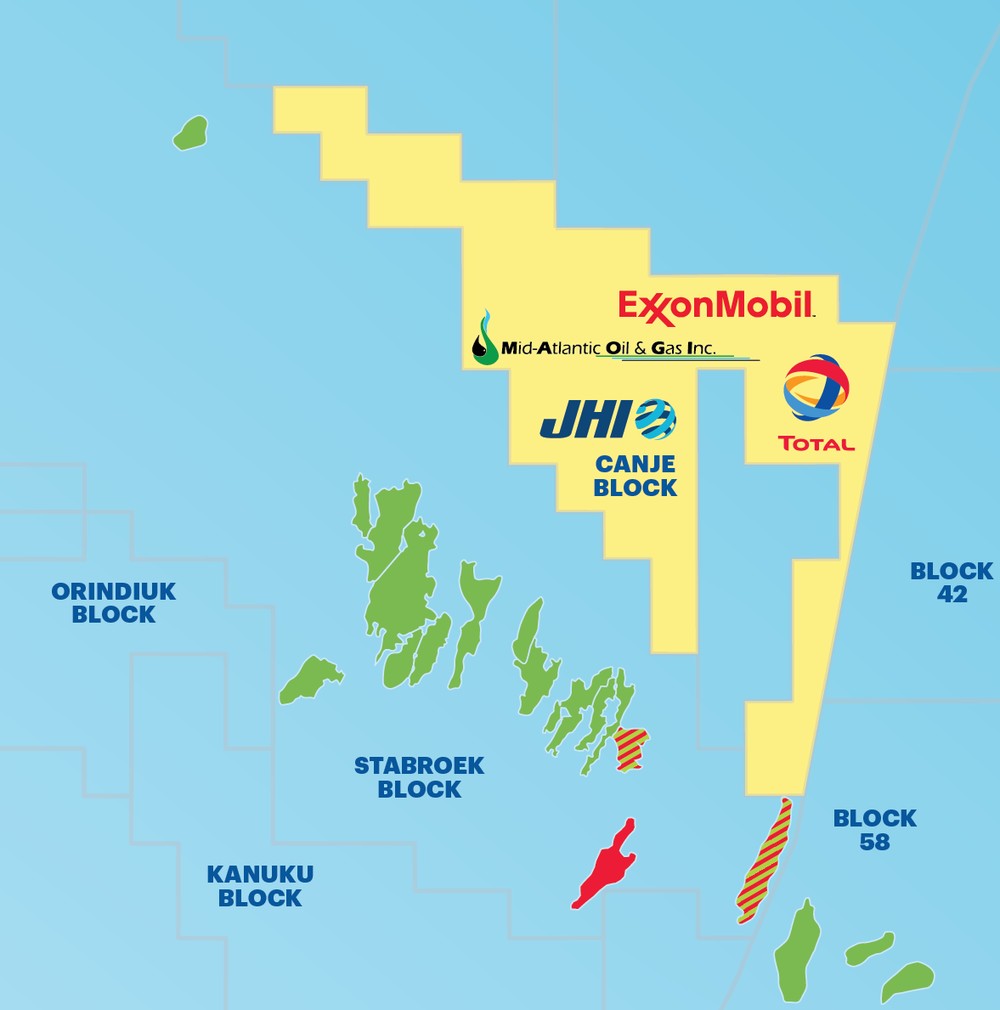Sapote-1, ExxonMobil’s third well in the Canje Block offshore Guyana, has failed to unearth evidence of commercial hydrocarbon volumes, according to oedigital.com citing Westmount Energy.
Westmount Energy, an indirect partner in the Canje Block through its stake in JHI Associates, said the Sapote-1 well on the Canje Block was drilled in 2,549 meters of water by Stena Drilling’s Stena DrillMAX drillship to a total depth of 6,758 meters.
The Sapote-1 well was designed to assay Upper Cretaceous reservoirs in a stratigraphic trap. The well, spudded in August, is located some 225 km northeast of Georgetown.
“The well encountered non-commercial hydrocarbons in one of the deeper exploration targets,” Westmount Energy said.
The Canje Block is operated by ExxonMobil (35%), with TotalEnergies (35%), JHI Associates (17.5%), and Mid-Atlantic Oil & Gas Inc. (12.5%) as partners. Westmount holds a 7.2% interest in the issued share capital of JHI.
According to oedigital.com, Eco Atlantic, also an indirect partner in the block through its 6.4% interest in JHI, said the Sapote-1 well recorded hydrocarbon evidence while drilling, and in the logging sequence, in a deeper interval than anticipated, but had no shows in the upper primary objective horizon.
“With sidewall coring and wireline logging complete, ExxonMobil will now work to define the reservoir properties, including porosity and permeability, and the cored samples will be analyzed for hydrocarbons,” Eco Atlantic said.
The Sapote-1 well is located in the southeastern section of Canje, about 50 km north of the Haimara discovery in the Stabroek Block which encountered ~207 feet (63 meters) of high-quality, gas-condensate bearing sandstone reservoir and approximately 60 km northwest of the Maka Central discovery in Block 58 which encountered ~164 feet (50 meters) of high-quality, oil-bearing sandstone reservoir, according to oedigital.com.
The 2021 exploration program on the Canje Block sought to test the extension of the vast hydrocarbon system which has resulted in 10 billion barrels of oil equivalent of recoverable resources discovered so far by ExxonMobil and its partners Hess and CNOOC in the adjacent Stabroek Block since 2015.






